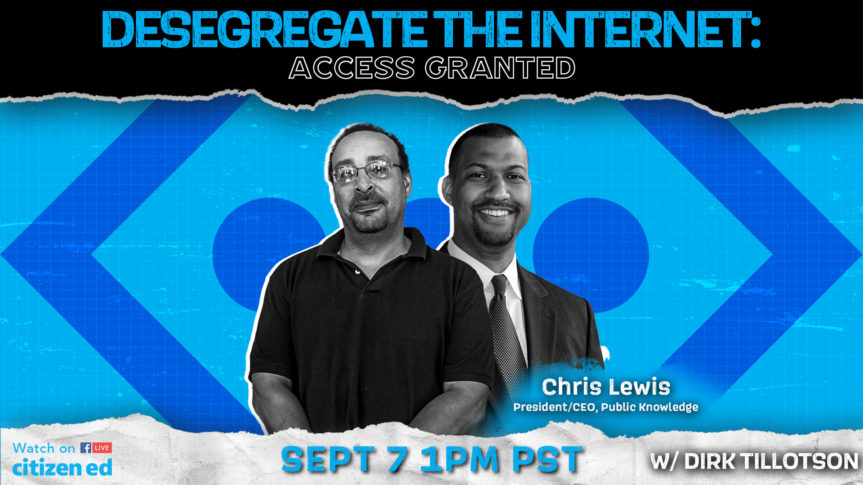Yesterday, we had a fantastic conversation with Public Knowledge‘s Chris Lewis on Digital Redlining. You can catch the full broadcast here.
Its not a coincidence that the old redlining maps, which racially restricted housing, align almost perfectly with the current mapping of broadband access.

And this lack of connections in places like Oakland is not just a business decision as the Electronic Frontier Foundation pointed out
Oakland has an estimated 7000+ people per square mile, which is far above sufficient density to finance at least one city-wide fiber network… 7,000 users per square mile is far more than a provider needs to pay for fiber. Chattanooga, which currently has its fiber deployed by the local government, has a population density of only 1222 people per square mile.- The Electronic Frontier Foundation
We dug in with Chris on the history and latest policy issues.
Lewis opened with a brief history on broadband and how its infrastructure was built on top of landline phones. However, it does not have the same kind of foundational rules and protections by the FCC that landline service inherently does. Digital redlining in this context deals with access and where internet providers are bias in investing in good broadband infrastructure. As defined by the Electronic Frontier Foundation – “digital redlining” of broadband, is where wealthy broadband users are getting the benefits of cheaper and faster Internet access through fiber, and low-income broadband users are being left behind with more expensive slow access by that same carrier.” This is major issue as a our entire world has had to become virtual almost instantly in the mid of the pandemic.
Some of the earliest studies on digital redlining, Lewis said, came from the National Digital Inclusion Alliance, a featured guest on Desegregate the Internet’s first episode just weeks ago. Even though the FCC still has much work to do, they are on the right track in implementing grant programs such as EBB (Emergency Broadband Benefit) and more to help mitigate the digital divide. Other movements such as Voice to Action are making sure that no one gets left in getting access. The disparities are documented but with policy advocates such as Public Knowledge, the digital divide can be mended.
Stay tuned for more!

